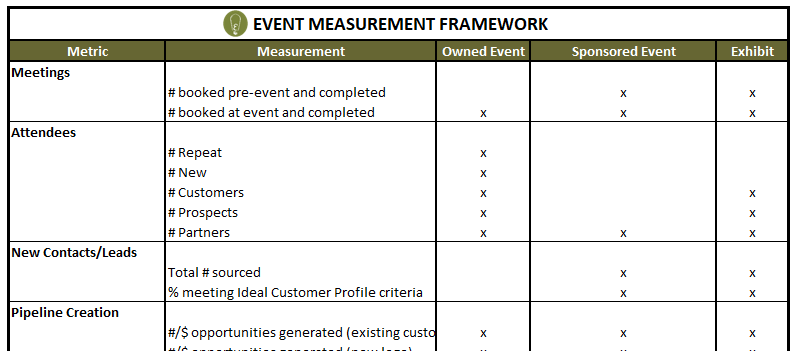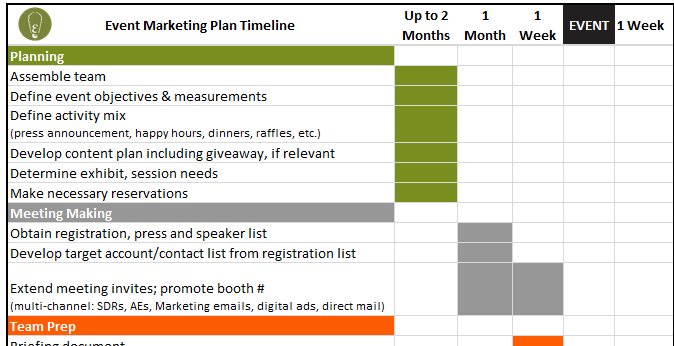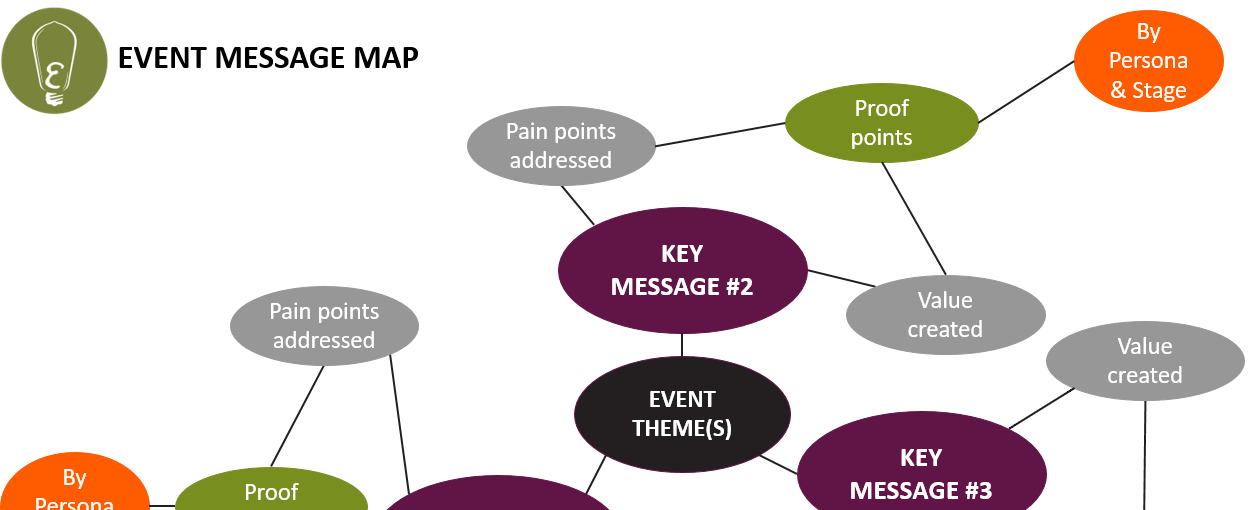You’re in event planning mode. What should we give away? What’s the entertainment? Should we have a specialty cocktail…? All questions that fly in the excitement of creativity and planning. But, press the pause button and take a step back; there will be plenty of time to consider these fine and ‘fun’ details. It’s time to do the heavier lifting to set your team up for success, ensuring ROI and repeat funding for next year.
- Measure with Intent
Companies often subscribe to a one-size-fits-all approach to setting event KPIs, often hyper-focusing on things like, number of attendees, booth visits and leads generated. While these measures offer some gauge of worthiness, they can be limiting as comprehensive indicators of true effectiveness - mainly in cases of lack of alignment with sales and flawed attribution modeling. Events come with an expensive price tag, and with that, expectation of pipeline creation and acceleration as ultimate demonstrators of success. Developing a goal-setting discipline anchored by these absolute outputs will drive focus and organizational alignment. That said, expanding your data set to capture measures tailored to each event will establish necessary linkages to marketing objectives, such as thought leadership and demand gen, and allow you to compare performance in the context of your overall event strategy, as discussed in my last blog.

- Plan Your Work, Work Your Plan
Whoever said, “the devil is in the details,” must have managed events. Cross-functional dependencies make events some of the most challenging initiatives to pull off, and good project management practices go a long way to affect positive outcomes. Start first by identifying key stakeholders, outlining objectives, and creating a working group to plan and execute the event. Next, develop your timeline and program plan with specifics like the event KPIs and content calendar, and distribute to all stakeholders. As the event draws closer, the planning file will also house such executional documents as:
- Event/ Booth duty schedule
- Event briefing document
- SDR/ booth scripts
- Social media schedule
- Customer/ Prospect discussion templates
- Account target list and booked meeting schedule
- Reservations and attendee/staff lists for parallel events
- Sorry we missed you / reschedule emails to be sent to meeting no shows

- Strategize with the End Game in Mind
What’s the one thing all events have in common? The desired outcome of revenue production by way of relationships enriched through meetings held at the show. Job one is to get customers and prospects to your booth, conference, session or breakfast, and more importantly, gain commitment for that coveted follow-up meeting or demo.
- Think ABM: Segmenting your target account list by journey stage will help frame your content and logistics plan. Consider SDRs’ hit lists, accounts in pipe, and candidates for account expansion as a starting framework for this exercise, outlining an approach based on common objectives for each group.
- Prioritize quality over quantity: Obsessively focus on your ICP as you review event target lists and send pre-show emails. Badge scans, dinner dates and selfies of those that don’t match your ICP are a waste of time and money.
- Thought leadership is your compass: Whether attending, speaking at, or sponsoring an event, obtain primers on the general session and keynote themes as fodder for your thought leadership content. Industry conferences emphasize topics that are top of mind for your customer. Weaving these topics into your content and social strategy is a novel and relevant way to position your solution.
- Keep data collection consistent: A standardized format is useful for focusing conversations and consistently capturing relevant details for post-show lead follow-up and nurture streams. If you keep it simple, post-event execution will be more efficient.
- Mobilize the ‘A’ team: Assemble an event staff that aligns with your event objectives. Will lots of customers be there? Have representatives from Customer Success on hand, and particularly in the booth to increase chances of prospect interactions with happy customers. Staff exhibits with BDRs who have a natural inclination to engage and qualify new prospects, while using your AEs and executives to meet with senior-level contacts to advance qualified, higher-value opportunities. The best event staff understand your customer, their pain points, and can effectively translate this into your solution’s value prop, so think cross-functionally as you look to draft your event ‘A’ team. Also, make it a priority to engage your best customer(s) who may be willing to spend time in your booth and/or participate in your speaking session; such third-party advocacy at an event is pure gold.
- Parallel process: Hospitality suites and micro-events organized as part of a larger event can be super effective for pipeline creation and acceleration. Plan early for the happy hour / dinner / entertainment that will happen in tandem with the rest of the event’s agenda. Ensure executive presence from your company and be thoughtful about seating charts, introductions and pairings between your staff and your guests. Forecast and track the results of these gatherings as part of your KPI reporting.
- Content is King
Like any great marketing campaign, effective event marketing relies on great content. Save-the-dates, keynote teasers, press announcement(s), high-value drawing promos, research studies, booth talktracks, live podcasts, and post-event nurture content are all examples of golden opportunities to reinforce your brand and market position in the context of featured themes. An event-specific message map will help document content themes and serve as reference for all stakeholders. Make sure to also factor product releases, launches and relevant third-party coverage when building your content plan and cadence of communications.

- It’s Not Over ‘til It’s Over
You did it, you pulled off a great event. So, now what? Get those new contacts into your CRM system, once screened for ICP alignment. And brainstorm ways to repurpose any and all compelling content created for and generated at the event. Task account owners with personalized follow-up. Tee up nurture streams. Session video or presentation materials make for great webinars and translate well for SDR play development, as does creative, personalized direct mail campaign for highly qualified targets. All of the above tactics are opportunities to tie in the themes from the event with your value proposition and gives recipients the opportunity to focus on your product, away from the distractions of the show.
Finally, schedule a debrief with event stakeholders to report on the KPIs and discuss feedback. Log the feedback in your program plan - you’ll be looking for it next year and be happy to have the historical record.
While the greatest of the marketing program budget line items, no other program offers meaningful interactions with your customers and prospects like events. Create an event plan that sets the stage for fruitful exchange of information, allows your team to shine, and your audiences to take note of your product and organization. This is the real-deal path to event ROI.




